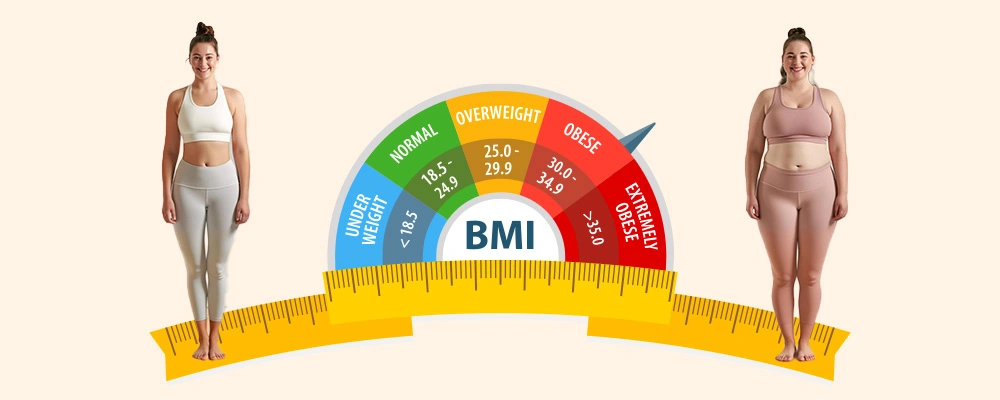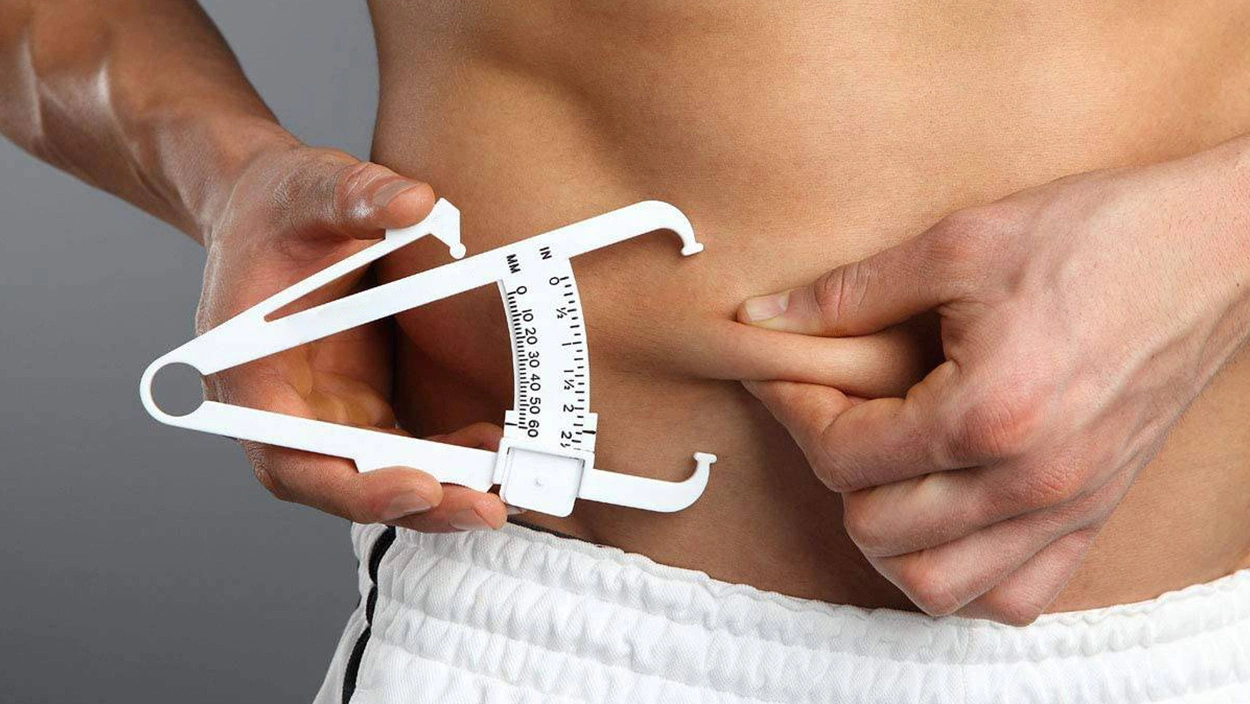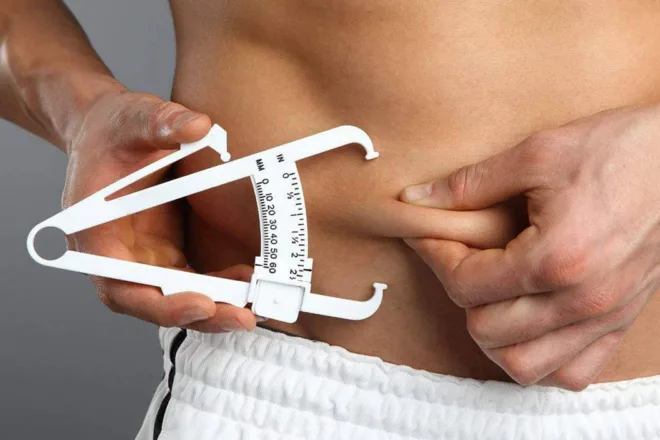What Does a BMI and Body Fat Calculator Really Tell You About Your Health?
A BMI and body fat calculator helps you understand your health from two angles: BMI estimates your weight relative to height, while body fat percentage reveals how much of your body is fat. Here’s what you need to know:
- BMI is quick and easy but may mislabel muscular people as overweight.
- Body fat % gives a clearer picture of health risks but needs special tools.
- Using both together offers better insight into fitness, fat loss, and health risks.
This combo helps track progress, guide fitness goals, and assess risk more accurately than weight alone.
When it comes to understanding your health, measuring your weight alone doesn’t always tell the full story. This is where tools like BMI (Body Mass Index) and body fat percentage calculators come into play. Both provide insightful data about your body composition, but they serve different purposes and offer unique perspectives on your overall health. In this article, we’ll explore the differences between BMI and body fat measurements, how they work, and why using a BMI calculator body fat tool can help you gain a complete picture of your health.

What Is BMI?
Body Mass Index (BMI) is a simple formula that uses your height and weight to estimate whether you fall into a healthy weight range. The formula is:
BMI = weight (kg) / height (m²)
BMI is widely used because it’s quick, easy to calculate, and gives a general idea of whether someone is underweight, normal weight, overweight, or obese. Here’s the standard BMI classification:
- Underweight: BMI < 18.5
- Normal weight: BMI 18.5–24.9
- Overweight: BMI 25–29.9
- Obese: BMI ≥ 30
While BMI has its advantages, it’s not perfect. Because it only considers weight and height, it doesn’t account for muscle mass, bone density, or fat distribution. For example, a muscular athlete might have a high BMI but low body fat, while someone with a normal BMI could still have an unhealthy level of body fat.
Weight
Height
Age

What Is Body Fat Percentage?
Body fat percentage measures how much of your total body weight is fat tissue, expressed as a percentage. For example, if you weigh 150 pounds and 30 pounds of that is fat, your body fat percentage is 20%.
Body fat percentage is often considered a more accurate measure of health because it focuses on fat tissue specifically, which is directly linked to health risks such as heart disease, diabetes, and other chronic conditions.
Here are general body fat percentage ranges for adults:
Men:
Essential fat: 2–5%
Athletes: 6–13%
Fitness: 14–17%
Average: 18–24%
Obese: 25% or more

Women:
Essential fat: 10–13%
Athletes: 14–20%
Fitness: 21–24%
Average: 25–31%
Obese: 32% or more
Unlike BMI, body fat percentage accounts for muscle mass and gives a clearer picture of your body composition. However, measuring body fat percentage can be more complicated and often requires specialized equipment like skinfold calipers, bioelectrical impedance devices, or DEXA scans.
BMI vs. Body Fat: Key Differences
While both BMI and body fat percentage are used to evaluate health, they’re not interchangeable. Here’s how they differ:
1. What They Measure
- BMI measures weight in relation to height, providing a general estimate of body size.
- Body fat percentage measures the proportion of fat tissue in your body, offering a more detailed look at body composition.
2. Accuracy
- BMI is less accurate for individuals with high muscle mass, as it can misclassify them as overweight or obese.
- Body fat percentage offers a more precise picture of health, especially for athletes or people with unique body types.
3. Health Insights
- BMI is useful for population-level studies or as a quick screening tool.
- Body fat percentage provides better insight into individual health risks like cardiovascular disease or metabolic disorders.
4. Ease of Use
- BMI can be calculated with just your weight and height—no equipment needed.
- Measuring body fat often requires tools like calipers or bioelectrical impedance scales, which may not always be accessible.

Why Use a BMI and Body Fat Calculator?
Given the limitations of both BMI and body fat measurements, using a BMI and body fat calculator together can provide a more holistic view of your health. These calculators often combine the simplicity of BMI with the accuracy of body fat percentage, offering dual insights that can help you make better decisions about your fitness and wellness goals.
For example, a BMI fat calculator allows you to see whether your weight is in a healthy range while also determining if your body fat percentage is within a safe level. This dual approach is particularly helpful for:
- Athletes: To ensure their muscle mass isn’t skewing BMI results.
- Weight Loss Goals: To track fat loss instead of just weight loss.
- Health Risk Assessment: To identify potential health concerns related to high body fat, even if BMI is normal.

Limitations of BMI and Body Fat Calculators
While these tools are valuable, it’s important to remember that neither BMI nor body fat calculators are perfect. Factors like genetics, age, gender, and lifestyle can influence your results. For instance:
- BMI doesn’t differentiate between fat and muscle, which can lead to misleading results for muscular individuals.
- Body fat percentage measurements can vary depending on the method used and the accuracy of the equipment.
That’s why it’s crucial to use these tools as part of a broader health assessment, rather than relying on them alone.
How to Use BMI and Body Fat Calculators Effectively
To get the most out of a BMI and body fat calculator, follow these tips:
- Take Multiple Measurements: Track your BMI and body fat percentage over time to monitor trends rather than focusing on a single result.
- Pair with Other Metrics: Combine BMI and body fat data with other health indicators like waist circumference, blood pressure, and cholesterol levels.
- Consult a Professional: Work with a healthcare provider or fitness expert to interpret your results and develop a personalized health plan.
The Bottom Line
Understanding your true health goes beyond the numbers on a scale. While BMI provides a quick and easy way to assess weight relative to height, body fat percentage offers deeper insights into your body composition and overall health risks. By using tools like a BMI calculator body fat or a BMI fat calculator, you can gain a more comprehensive understanding of your health and make informed decisions about your wellness journey.
Ultimately, the goal is not just to achieve a certain BMI or body fat percentage, but to maintain a balanced, healthy lifestyle that supports your physical and mental well-being. Whether you’re an athlete, someone working on weight loss, or simply looking to improve your health, these calculators can be powerful tools to guide you toward your goals.
Refrerences








